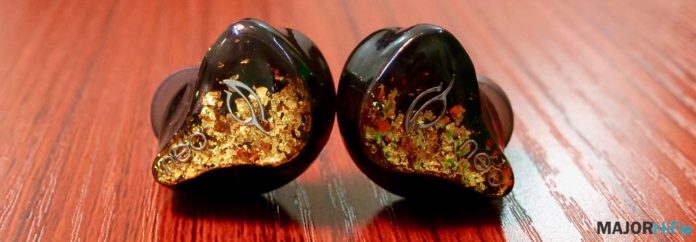Today we’re looking at SeeAudio’s Neo IEMs. Upon taking these out of the box, their shimmery, gold backing had me immediately entranced. But I knew I had to set aside my obsession with staring at them and not let it influence how I felt about the sound of these $1,099 IEMs. SeeAudio does make lower priced models, such as the Yume, which runs for $169. However, the Neo’s got a high price, and I have high standards, so let’s talk about how they perform.
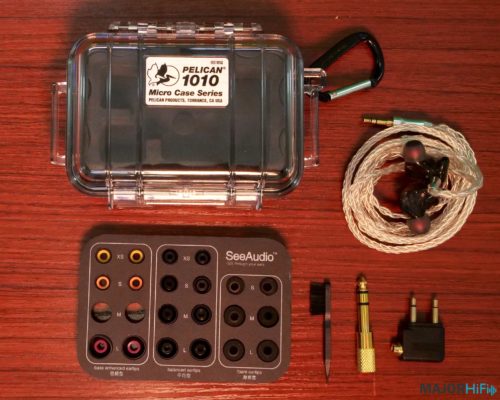
What You Get
- SeeAudio Neo IEMs
- Hardshell, clear carrying case with clip
- 11 sets of ear tips: 4 bass enhancing, 4 balanced, and 3 foam
- 3.5mm to 1/4” converter
- 3.5mm female to Dual 3.5mm Male converter
- Cleaning Brush
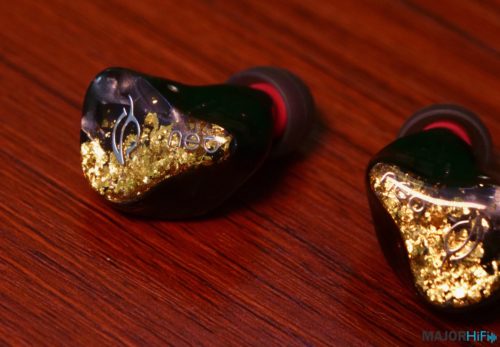
Look and Feel
Let’s start off with how beautiful these are. The Neo sports a glossy black shell with gold flakes scattered on the back paired with chrome lettering. They have a very regal appearance and are easy to marvel at. These are also some of the most comfortable IEMs I’ve worn in a long time, they feel extremely smooth in the ear and appear to have a design that is slim enough to be very versatile in accommodating different ear-shapes.
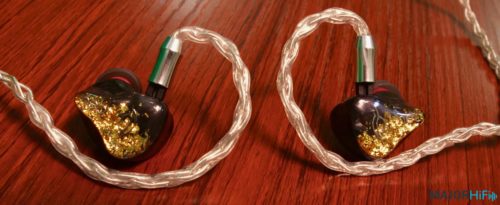
Design
The Neo uses 10 balanced armature drivers, 4 Sonion drivers for the low, 2 knowles for the mid and 2 knowles for the high. Their 6-N OCC cable is meant to offer “ultra-low internal sound signal resistance” and has a 3.5mm termination with 2-pin 0.78mm connectors.
These have a frequency response of 20Hz-20kHz and an impedance of 28Ohms
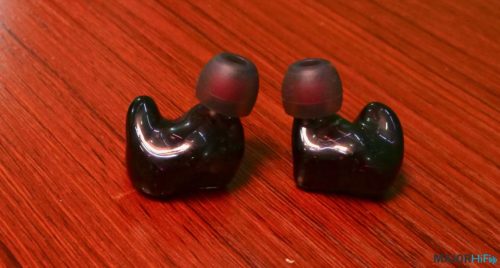
Sound Signature:
The Neo are a perspective altering IEM, taking you to new corners of each recording. Listening to one of my favorite songs of the past couple years, Rosalía’s “Pienso En Tu Mirá,” I got a more detailed look at some of my favorite pieces of the song that I’ve always longed to be given a more in-depth experience of. The meandering, vocoder-like harmonies beneath the lead vocals were given freedom to spread out and create a textural, sensory listening experience. The rhythmic claps that carry the song had heightened impact with their attack time while the detuned organ underlying the composition felt fluid and warmed up with some slight coloration. Even the imperfect sonic attributes of the song where presented beautifully, balanced, and seamlessly.
Soundstage
The Neo’s soundstage is capable at a level above most IEMs. With sub heavy music, the sound at times gets pulls towards the center a bit more, but with looser mixes, the Neo gladly opens the door for sound to flutter outwards, forward, and back. Their sound separation meets a high standard, and their ability to create a realistic atmosphere for almost any track caught me off guard. Even the most processed vocals still somehow felt intimate, with reverb on many tracks given a much more organic image. I don’t normally comment on soundstage by referencing electronic-based productions, but when I listened to Tennyson and Aloe Black’s track “Body Language,” there was an unmistakable speaker-like feeling the Neo managed to create. The sense of dimension the song was given made it easy to get lost in the massive soundscape being created. Synths were given added holographic porousness while the various percussion and twangs fluttered and swirled around my head.
Lows
These have a deep but tight low end. It’s not the type of low end response to allow for much rumble, straying so far from bloating that at times I felt it was almost too secured. It’s leaning much more towards a contained intensity in its impact. The Neo have a very centered low end response, with bass and sub heavy songs tending to anchor the track fairly firmly. On the other hand, acoustic recordings or samples may be allowed a bit more bass imaging. On a more synthetic composition like Joe Goddard’s “Home,” the low end feels very cleaned up, almost straight from the drum machine circuit. If you want more looseness and coloring in your lows end these are not devoid of it, but certainly not the most potent example. With more live sounding tracks like Willow’s “PrettyGirlz,” we can get a bit more of a freeform kick and bass response, the Neo cleaning up the timbre without removing its coloration and vintage tonality.
Mid range
The Neo delivers a tailored, purified midrange that walks right up to the fine line between gripping presence and overt resonance. Especially for vocals, even at higher volumes, their mids never cross that dangerous harshness threshold. These clearly have a calculated and successful boosting along with some more liberal cutting going on in the mids. Listening to Brandi Carlile’s “The Joke” it’s clear that a small section of the high mid has been brought up, somewhere between 2-4kHz, as the main source of forwardness, while the rest has been slightly subdued. Carlile’s voice felt extremely realistic and intimate, the reverb taking the same organic quality it did in almost every wetter song I tried on these. The rest of the composition benefitted from their velvety low mid, the strings getting a healthy dose of the Neo’s subtle, clean boost.
Highs
I wouldn’t classify the Neo as notably bright, at least not in the highest of the highs. If you’re used to a brighter sound, these may almost feel slightly rolled off in the 16k+ range, and extremely warm from there on down. While this keeps the Neo away from the arguably excessive crispness some listeners (myself included) often crave, it also eliminates any sense of sibilance or shrillness from the listen and gives us a smooth, slightly textural quality. Listening to the silky recordings on Barrie’s “Clovers,” the vocal shine is slightly subdued compared to how I’m used to hearing it, as are the snap of their drums. However, the more organic, warmed up sound makes for a drier, more personal experience with the song. The Neo in many ways have a fairly neutral high end, tame enough to quell the treble-sensitive but still retaining enough presence as to not offend the brightness-obsessed.
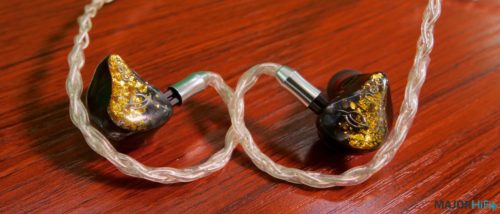
Ear Tips
As for the different ear tips included, I did not notice much of a difference between the bass boosting and balanced ear tips. The bass boosting seemed to let slightly more sub range through, and for much of the review I used my Final Audio ear tips that I felt sat somewhere in the middle of the balanced and bass boosting ear tips provided by SeeAudio. None felt to make a major altercation to the sound signature.
Overall
The Neo are an undoubtably impressive IEM that will respect the higher prices its listeners must pay for them. They have a very versatile sound that feels tailored but not overly-modulated. Those looking for a very clean, natural timbre will love what the Neo has to offer.

You can compare the SeeAudio Neo to many other IEMs using Major HiFi’s IEM Ranking Tool
You can purchase SeeAudio’s Neo IEMs at Audio46
Compare the ranking of various headphones, earbuds and in-ear monitors using our tools.
Discuss this, and much more, over on our forum.
---MAJORHIFI may receive commissions from retail offers.


